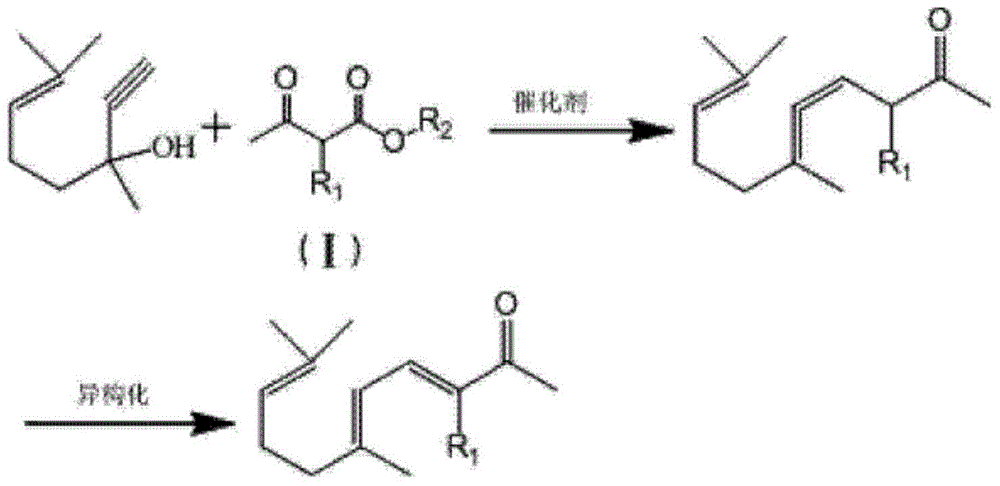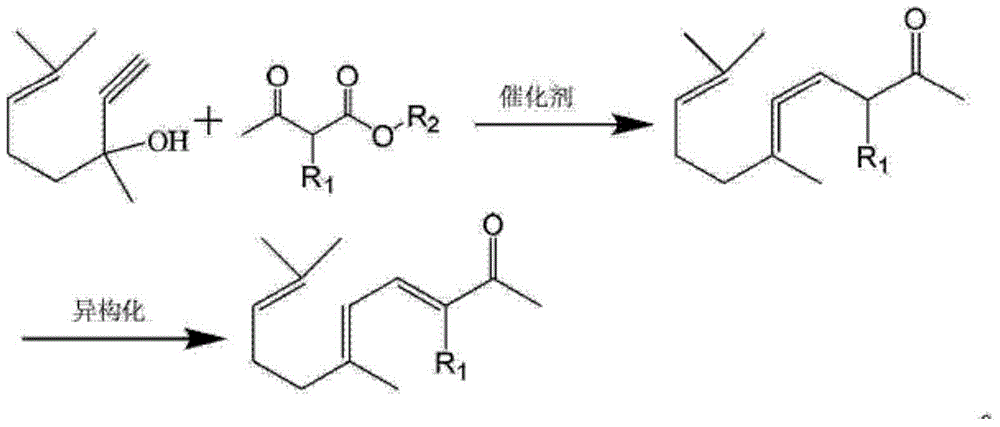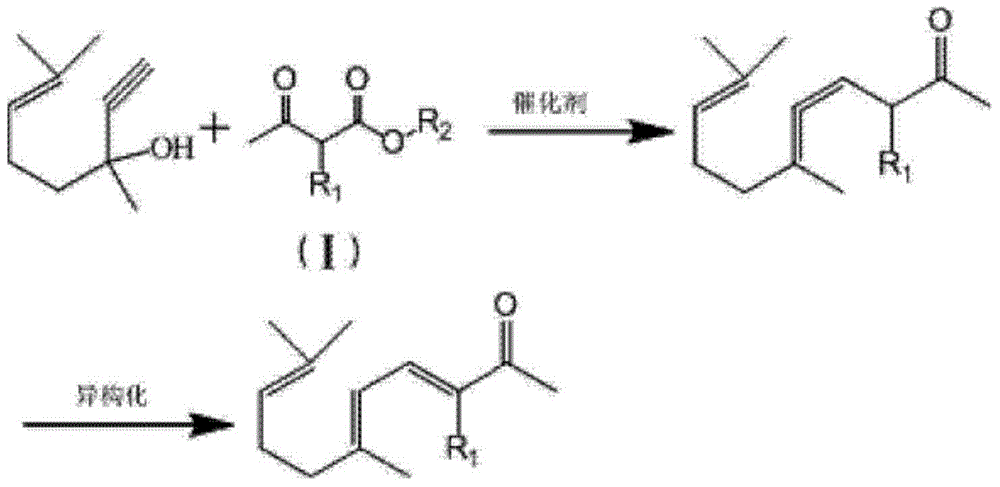Ionone series spice intermediate synthesis method
The technology of ionone and pseudo-ionone is applied to the synthesis of ionone-based fragrance intermediates and the field of compound synthesis, which can solve the problems of low space-time yield and high catalyst cost, and achieves few reaction steps, high yield and pollution. less effect
- Summary
- Abstract
- Description
- Claims
- Application Information
AI Technical Summary
Problems solved by technology
Method used
Image
Examples
Embodiment 1
[0036] Put 100g (content 98.5%) dehydrolinalool, 91.0g methyl acetoacetate, and 4.0g aluminum isopropoxide into a 500ml pressure reaction bottle, carry out magnetic stirring and heat to an internal temperature of 85°C with an oil bath to maintain the reaction pressure It was 1.2MPa and reacted for 2 hours, and the conversion rate of dehydrolinalool was 98.8% according to gas chromatography analysis. After the reaction is completed, fill it with nitrogen to normal pressure, cool down to 15°C, add dropwise 50ml of 0.5% sodium hydroxide methanol solution, and keep warm for 1.5 hours after dropping. After the isomerization is completed, add ester acid to adjust the pH value at 6-7. The reaction solution was filtered with methanol as a solvent through a column equipped with a diatomaceous earth filter aid, and the filtrate was rectified to obtain 117.3 g of 97.5% (cis and trans sum) pseudoionone products. The yield of pseudoionone is about 93.1%
Embodiment 2
[0038] According to the method of embodiment 1, the only difference is that in this embodiment, 91.0 g of methyl acetoacetate is changed into 83.5 g of methyl acetoacetate, and other conditions remain unchanged. The conversion rate of dehydrolinalool was 97.6%, and 114.5 g of pseudoionone products with a content of 98.1% were obtained. The yield of pseudoionone is about 92.5%
Embodiment 3
[0040] According to the method of embodiment 1, the only difference is that in this embodiment, 91.0 g of methyl acetoacetate is changed into 98.5 g of methyl acetoacetate, and other conditions remain unchanged. The conversion rate of dehydrolinalool was 99.2%, and 114.3 g of the pseudo-violet siphon product with a content of 97.8% was obtained. The yield of pseudoionone is about 92.1%.
PUM
 Login to View More
Login to View More Abstract
Description
Claims
Application Information
 Login to View More
Login to View More - R&D
- Intellectual Property
- Life Sciences
- Materials
- Tech Scout
- Unparalleled Data Quality
- Higher Quality Content
- 60% Fewer Hallucinations
Browse by: Latest US Patents, China's latest patents, Technical Efficacy Thesaurus, Application Domain, Technology Topic, Popular Technical Reports.
© 2025 PatSnap. All rights reserved.Legal|Privacy policy|Modern Slavery Act Transparency Statement|Sitemap|About US| Contact US: help@patsnap.com



